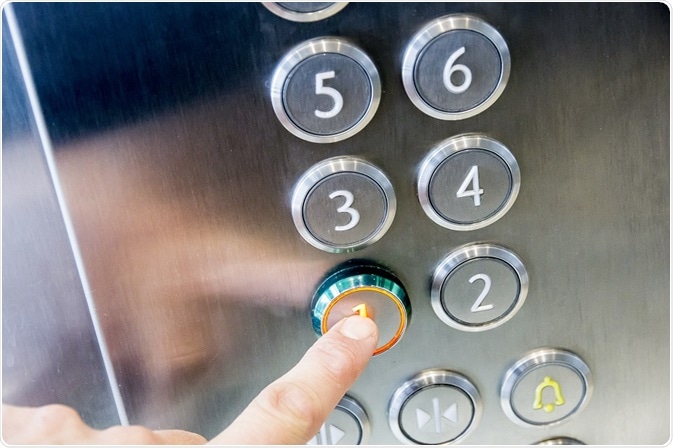Claustrophobia is a psychological disorder in which the person fears enclosed spaces or physical restriction. Severe claustrophobia has a high prevalence of around 4 percent in the population, and many more people have a milder version of the disorder.

Credit: Azat Valeev/ Shutterstock.com
Symptoms of claustrophobia range from mild sweating and trembling to nausea, headaches, and even fainting. Claustrophobia can sometimes lead to panic attacks.Although claustrophobia is fairly common and well known, there is much that is not yet understood about its origins and potential avenues of treatment.
Near and far space
In one study published in the journal Cognition in 2011, researchers looked at how perception of near and far space relates to manifestations of claustrophobia.According to the study, near space is perceived differently from far space by the brain. Specific neurons in the brain have been shown to respond to objects close to or approaching the body.
In healthy adults, there is a small perception bias toward the left in viewing near space, whereas the bias shifts to the right for distant spaces. The rate of shift of the bias from left to right can be measured as the distance changes, and that rate of change can be used as a marker for the “size” of near space. It is generally related to arm length. People with shorter arms have smaller near spaces. Those with longer arms have larger near spaces.
However, the study showed that, independent of arm length, individuals with high levels of claustrophobic fear had larger near spaces than those with less claustrophobic fear. The study results suggest that claustrophobia may derive from a distortion in the perception of space.
Claustrophobia can run in families. A single gene encoding a stress-regulated neuronal protein, GPm6a, can cause claustrophobia. In a 2013 study published in Transl. Psychiatry, mice deficient in Gpm6a had no obvious abnormalities, but could be induced to develop claustrophobia. In humans, mutations of the Gpm6a gene were more common in claustrophobic individuals than those without claustrophobia.
The amygdala is the part of the brain that controls anxiety. The size of the amygdala may influence a person’s susceptibility to anxiety disorders, including claustrophobia. In a study comparing the size of amygdala between patients with panic disorder and patients without panic disorder, those with panic disorder had smaller amygdala volumes. They also had smaller hippocampus volumes.
Treatment
Cognitive behavioral therapy and exposure therapy are the standard treatments for claustrophobia. However, virtual reality represents another novel approach on the horizon. In virtual reality exposure therapy (VRET), negative stimulus can be applied for exposure purposes, but in a manner that is less expensive and intimidating than exposure to the real stimulus.
The goal of virtual reality systems is to invoke the presence of the trigger, eliciting an emotional response. In one study of a virtual reality exposure therapy prototype system, the system was effective in creating a sense of presence in triggering environments, and showed potential for future use in therapy. The VRET system also has potential for use with other psychological disorders.
Sources:
- Near space and its relation to claustrophobic fear, https://www.ncbi.nlm.nih.gov/pubmed/21396630
- Specific fears and phobias: Epidemiology and classification. https://www.ncbi.nlm.nih.gov/pubmed/9926096
- A single gene defect causing claustrophobia, https://www.ncbi.nlm.nih.gov/pmc/articles/PMC3641414/
- Smaller amygdala is associated with anxiety in patients with panic disorder, onlinelibrary.wiley.com/doi/10.1111/j.1440-1819.2009.01960.x/abstract
- Viability of virtual reality exposure therapy as a treatment alternative, http://www.sciencedirect.com/science/article/pii/S0747563207000787
- A virtual reality claustrophobia therapy system - implementation and test, http://ieeexplore.ieee.org/abstract/document/4811020/?reload=true
Further Reading
Last Updated: Feb 26, 2019